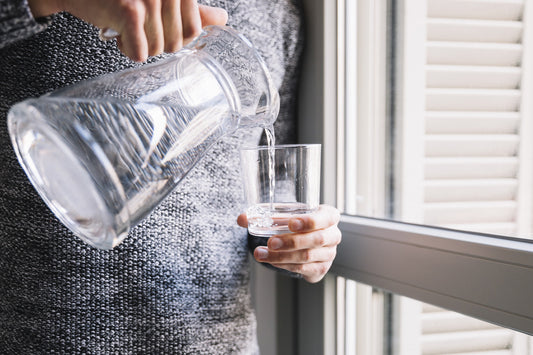Access to clean water is not merely a convenience but a fundamental need for healthy living. Whole house water filters serve as a frontline defense in purifying water at its entry point into your home, ensuring every tap dispenses clean, safe water.
These systems effectively eliminate a broad spectrum of contaminants such as sediment, chlorine, and other harmful substances that can compromise your water's taste, smell, and safety. By filtering water at the source, whole house systems provide a comprehensive solution that individual faucet filters cannot match, ensuring consistent quality throughout your home.
Recognizing the Need for Filter Replacement
Signs Your Filter Needs Changing
A noticeable decline in water pressure throughout your home is a clear indicator that your whole house water filter might be clogged and in need of replacement. Such a decrease in flow rate occurs because the filter, over time, accumulates particles and contaminants it has trapped, reducing its efficiency. Being vigilant about these changes is crucial as it not only affects the quality of water but can also indicate the filter's capacity to remove impurities is compromised.
Recommended Frequency for Filter Replacement
To maintain optimal water quality, experts recommend changing your whole house water filter annually or sooner if you notice any drop in performance. This routine maintenance helps prevent the proliferation of bacteria within the filter and ensures your system operates at peak efficiency, thus safeguarding your household's water supply.

Image by freepik
Preparation for Filter Replacement
Necessary Supplies
The key to a smooth filter change lies in proper preparation. Before starting, ensure you have all necessary supplies: a compatible replacement filter specific to your system's requirements, a filter housing wrench for opening the filter canister, buckets to catch any spillage, clean rags for wiping down components, and plumber's silicone grease for sealing connections. Having these items at hand minimizes downtime and makes the process more efficient.
Pre-Change Checklist
Creating a checklist and organizing your workspace before beginning the filter replacement can significantly streamline the process. This preparation phase includes identifying the main water shutoff valve, ensuring easy access to the filter housing, and preparing a cleaning solution for the filter canister. Such readiness not only facilitates a smoother operation but also helps prevent common pitfalls.

Image by pch.vector on Freepik
Step-by-Step Guide to Changing Your Water Filter
Shutting Off the Water Supply
Initiating the filter change process requires halting the water supply to prevent leaks and make the system accessible. This step might involve turning off the main water supply or a dedicated valve for the filtration system, depending on your setup.
Releasing Pressure from the System
After the water supply is shut off, opening a faucet downstream of the filter system helps release any built-up pressure. This precautionary measure prevents water from spurting out when you open the filter housing, reducing mess and potential water damage.
Removing the Filter Housing
With the pressure released, use the filter housing wrench to unscrew the canister holding the filter. It's normal for some water to spill during this step, so having a bucket ready to catch the water is wise.
Cleaning and Replacing the Filter
Remove the old filter and dispose of it according to local regulations. Then, clean the inside of the canister with your prepared soapy water, ensuring it's free of debris before inserting the new filter. This cleanliness is crucial for maintaining water quality.
Lubricating the O-Ring
Before reassembling, apply a thin layer of plumber's silicone grease to the O-ring on the canister or housing lid. This lubrication helps ensure a watertight seal and prevents the ring from getting damaged or pinched during reassembly.
Reattaching the Housing and Checking for Leaks
Carefully screw the housing back into place, hand-tightening as much as possible before using the wrench for a final quarter turn. Gradually turn back on the water supply to check for leaks. Address any leaks immediately to ensure a secure, dry fit.
Flushing the New Filter
Finally, flush the system by running water through it until it's clear of any air or particulate matter. This process might involve running water for several minutes and can help remove any fine particles introduced by the new filter.

Ensuring Clean Water Post-Replacement
After the replacement, it's essential to monitor water quality and pressure to ensure the system operates as expected. Regular checks can help identify any issues early, and understanding when to seek professional assistance for maintenance or unexpected problems is crucial for the longevity of your water filtration system.
Conclusion
Changing your whole house water filter is a critical maintenance task that significantly enhances your home's water quality and safety. By following the outlined steps, homeowners can confidently manage this process, ensuring their families enjoy clean, safe water.
This guide underscores the feasibility and importance of regular water filter maintenance, empowering homeowners with the knowledge to maintain their systems effectively.

Image by freepik
FAQs
How often should I change my whole house water filter?
It's best to replace your filter annually or if you notice any decline in water flow or quality, ensuring your system continues to effectively remove contaminants.
Can I change the water filter myself?
Yes, with basic tools and following detailed instructions, most homeowners can replace their whole house water filters without professional help.
What do I do if I find leaks after replacing the filter?
Ensure the housing is securely tightened and the O-ring is properly lubricated. If leaks persist, it may indicate a need for replacement parts or professional assistance.
How do I know which replacement filter to buy?
Consult your system's user manual for specific filter model recommendations or contact a professional for advice to ensure compatibility and optimal performance.
What are the signs that my water filter is working correctly?
Clear water, stable water pressure, and the absence of strange tastes or odors are indicators that your water filter is functioning effectively.
Featured image: Image by freepik





